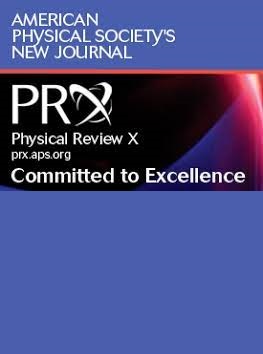光电发射揭示CaKFe4As4中电子-自旋涨落耦合
IF 15.7
1区 物理与天体物理
Q1 PHYSICS, MULTIDISCIPLINARY
引用次数: 0
摘要
非常规超导体中的电子-玻色子耦合是理解超导对对称性的关键参数之一。在这里,我们报告了铁基超导体CaKFe4As4中电子-自旋涨落耦合的明确光发射证据,通过高分辨率ARPES获得。我们的研究确定了α带上独特的扭结结构,仅在超导相中可见,并与超导性密切相关,表明了强电子-玻色子相互作用。值得注意的是,这种扭结结构对应于11 meV和13 meV的两种不同的玻色子模式,与之前在非弹性中子散射实验中观察到的自旋共振模式一致。这种排列强调了反铁磁波动在这种超导体的配对机制中的重要作用。此外,ARPES揭示的独特的动量依赖和轨道选择特性为配对对称性提供了深刻的见解,表明自旋涨落促进了s±波配对。我们的发现不仅突出了自旋共振在CaKFe4As4超导性中的关键作用,而且增强了我们对非常规超导体中电子-自旋涨落相互作用的理解。2025年由美国物理学会出版本文章由计算机程序翻译,如有差异,请以英文原文为准。
Revealing the Electron-Spin Fluctuation Coupling by Photoemission in CaKFe4As4
Electron-boson coupling in unconventional superconductors is one of the key parameters in understanding the superconducting pairing symmetry. Here, we report definitive photoemission evidence of electron-spin fluctuation coupling in the iron-based superconductor CaKFe4As4, obtained via high-resolution ARPES. Our study identifies a distinct kink structure on the α s ± CaKFe 4 As 4 Published by the American Physical Society 2025
求助全文
通过发布文献求助,成功后即可免费获取论文全文。
去求助
来源期刊

Physical Review X
PHYSICS, MULTIDISCIPLINARY-
CiteScore
24.60
自引率
1.60%
发文量
197
审稿时长
3 months
期刊介绍:
Physical Review X (PRX) stands as an exclusively online, fully open-access journal, emphasizing innovation, quality, and enduring impact in the scientific content it disseminates. Devoted to showcasing a curated selection of papers from pure, applied, and interdisciplinary physics, PRX aims to feature work with the potential to shape current and future research while leaving a lasting and profound impact in their respective fields. Encompassing the entire spectrum of physics subject areas, PRX places a special focus on groundbreaking interdisciplinary research with broad-reaching influence.
 求助内容:
求助内容: 应助结果提醒方式:
应助结果提醒方式:


